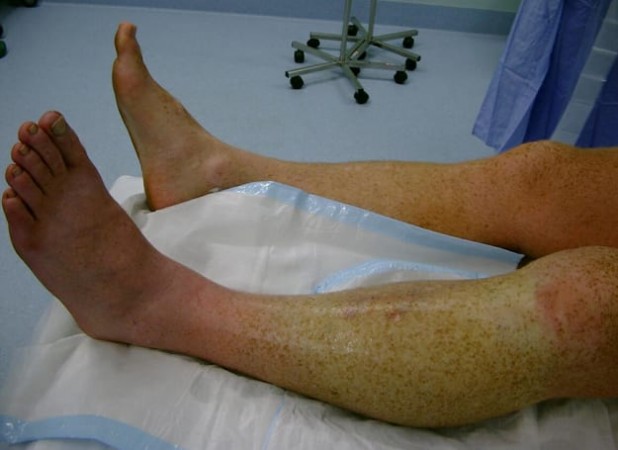Restless Legs Syndrome (RLS), a neurological disorder, can disrupt your sleep and overall well-being. Learn about its symptoms, underlying causes, and effective remedies to manage this condition.
Recognizing the Symptoms
- Unpleasant Sensations: Individuals with RLS often experience uncomfortable sensations in their legs, described as crawling, itching, or tingling.
- Worsening at Rest: These sensations typically worsen when at rest, especially during the evening or at night.
- Urge to Move: An irresistible urge to move your legs to alleviate discomfort characterizes RLS.
- Temporary Relief: Movement provides temporary relief, but the symptoms return when still.
Exploring the Causes
- Genetic Factors: Family history plays a significant role, as RLS tends to run in families.
- Dopamine Imbalance: Alterations in dopamine, a neurotransmitter, are linked to RLS development.
- Iron Deficiency: Insufficient iron levels in the brain may contribute to RLS symptoms.
- Chronic Diseases: Conditions like kidney failure, diabetes, and peripheral neuropathy can trigger or worsen RLS.
- Pregnancy: Hormonal changes during pregnancy can lead to RLS symptoms in some women.
Seeking Effective Remedies
- Lifestyle Adjustments: Regular exercise, avoiding caffeine and alcohol, and maintaining a consistent sleep schedule can alleviate RLS symptoms.
- Massage and Compression: Massaging your legs or using compression wraps can provide relief.
- Hot and Cold Therapy: Applying heat or cold to the affected area might help reduce discomfort.
- Medications: Doctors might prescribe medications like dopamine agonists, anti-seizure drugs, or pain relievers to manage symptoms.
- Iron Supplements: If an iron deficiency is detected, supplements can be beneficial.
- Relaxation Techniques: Practices like yoga, meditation, and deep breathing can improve overall well-being and potentially reduce RLS symptoms.
Improving Sleep Quality
- Sleep Environment: Creating a comfortable sleep environment promotes better sleep.
- Bedtime Routine: Establishing a calming bedtime routine signals your body that it's time to rest.
- Mindfulness and Relaxation: Mindfulness exercises and relaxation techniques can help calm the mind and reduce symptoms.
- Leg Movement: Gently stretching and moving your legs before bed might prevent discomfort during the night.
In conclusion, Restless Legs Syndrome can significantly affect your quality of life, but there are various ways to manage its symptoms. From lifestyle adjustments to medical treatments, you can find relief and improve your sleep quality. If you're experiencing RLS symptoms, consult a healthcare professional to determine the best course of action.
How to Recognize a Healthy Relationship
Unveiling Menopause Warning Signs: Stay Informed for a Smooth Transition
The Right Way to Enjoy Fruits: Avoid These 5 Common Errors
